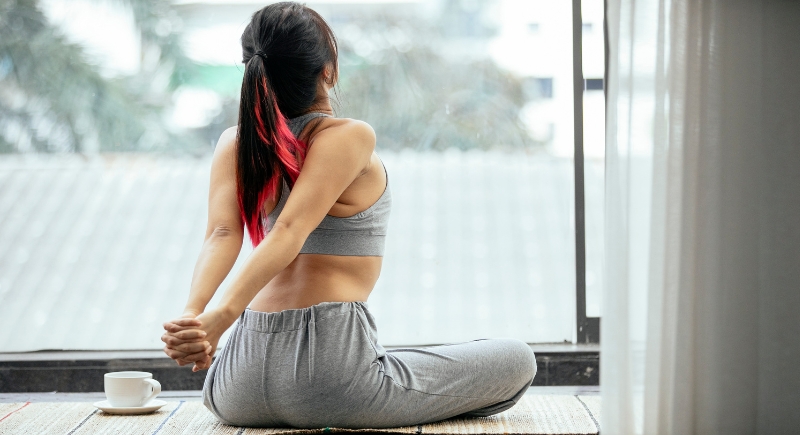The Unexpected Health Benefits of Sitting on the Floor More Often
For centuries in the West, sitting on the floor carried a quiet stigma. Chairs were symbols of civility and class, while sitting on the rug suggested carelessness or poor manners. That idea became so ingrained that it shaped how generations learned to rest, dine, and even socialize.
Yet the practice that once seemed improper elsewhere never went away. Across Asia and the Middle East, people continued to eat, rest, and gather close to the ground — a tradition now drawing attention from health researchers. The simple act of sitting on the floor, it turns out, might be one of the easiest ways to support flexibility, balance, and longevity.
Why Getting Low Is Good For You

Image via Pexels/Miriam Alonso
Sitting on the floor activates muscles that often stay idle in a chair. Without back support, the core works continuously to stabilize the body, strengthening the abs, hips, and spine. Doctors at the Hospital for Special Surgery in New York explain that even standing up from the floor engages the hips, knees, and legs in a way that helps maintain mobility and coordination. It’s a practical, everyday form of movement that supports longevity.
A study in the European Journal of Preventive Cardiology found that people who can sit down and rise without using their hands tend to live longer. The test isn’t about athletic ability—it measures how well the body can move as a unit. Good balance, flexible joints, and core strength all contribute to that smooth motion, which is a reliable marker of overall health.
Loosening Stiff Hips And Tight Backs
After long hours in chairs, many people deal with tight hips and a sore back. Floor sitting encourages the body to move differently. Cross-legged or kneeling positions open the hips, stretch the legs, and promote better circulation. Researchers note that these positions stimulate joint lubrication, which helps reduce stiffness and maintain flexibility.
The gentle, consistent movement of floor sitting keeps joints active and prevents the tension that builds up in chair-bound postures. Over time, it can improve the range of motion and make daily tasks—like bending, reaching, or climbing stairs—feel more natural.
Staying upright on the floor is more active than it looks. Each small shift in position keeps stabilizing muscles engaged, strengthens the core, and improves posture. Sports medicine experts say these micro-movements help with balance and coordination, which are key to avoiding injuries and maintaining strength as you age.
In cultures like India and Japan, sitting on the floor has long been associated with mindfulness and good digestion. Modern studies now support those benefits, which shows that eating in this position encourages proper alignment and slows the pace of meals, which aids digestion and focus.
How To Start Comfortably

Image via Canva/pixelshot
If you’re new to floor sitting, begin gradually. Try short sessions with a folded blanket or cushion under your hips to reduce strain. Switch between cross-legged, side-sit, and kneeling positions to find what feels best. Over time, your body will adjust, and sitting or rising will become easier and more fluid.
Those with joint issues can still benefit by using support props or modifying positions to limit pressure on the knees or hips. Even a few minutes a day helps undo the stiffness caused by too much chair time.